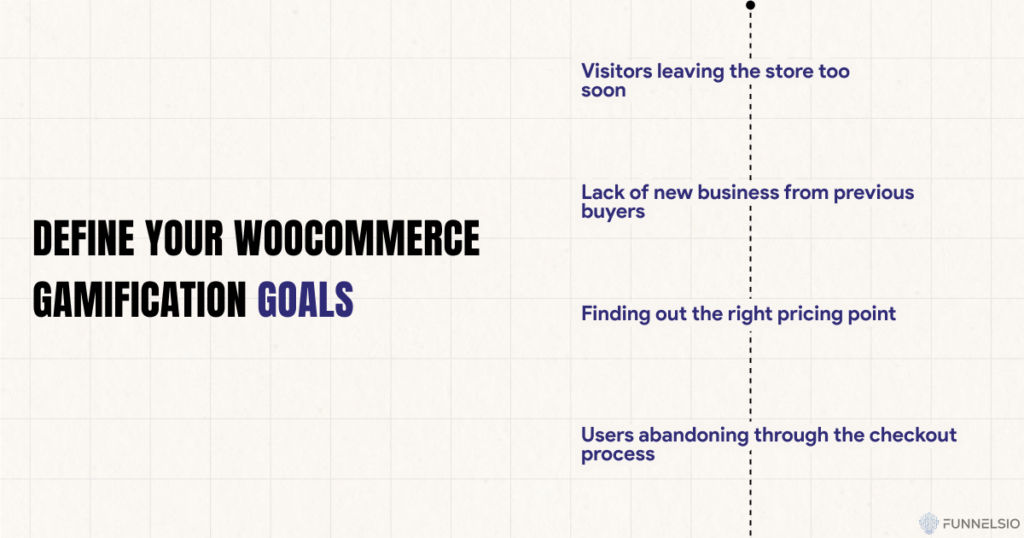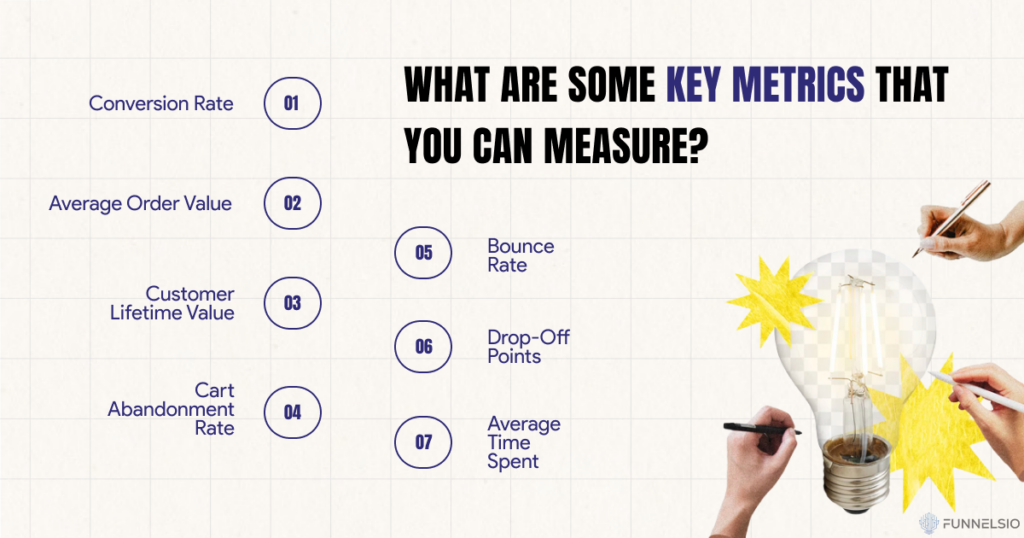Guide WooCommerce shop owners on how to measure the effectiveness of their gamification efforts. Discuss important metrics to track, such as conversion rates, customer engagement, repeat purchases, and average order value. Gamified woocommerce shop is one of the ways through which you can explore a handful of changes that can help your store grow.
There is always room to try and implement new things in your WooCommerce shop to get a competitive edge and generate more revenue. However, it is important to understand and track the output to verify if gamification is really effective.

Define your Woocommerce gamification goals.
To ensure that you are on the right track, you may need to start by defining your goals for WooCommerce gamification. There are various challenges you may face in your WooCommerce platform, and there can be unique solutions for some of them. As such, you must define the challenges you are planning to overcome.
Here are some of the challenges you may be facing:
Visitors leaving the store too soon:
Plenty of visitors create an initial impression of a WooCommerce store at the very first glance. Engaging the visitor is among the fundamental element of WooCommerce stores. Stats suggest that if visitors have to wait 3 seconds for the store to load, 7.57% of visitors will abandon the site.
Lack of new business from previous buyers:
Making a sale is hard by itself. However, it is as crucial to retain the customer once you get him to make one purchase with you. Retaining businesses have a significant impact on WooCommerce growth, as with any business.
Likewise, not being able to attract previous buyers again will leave your store at the mercy of new customer acquisition.
Finding out the right pricing point:
WooCommerce is now more competitive than ever. It is a prerequisite that you place your best offers forwards for your target market. In that case, it becomes tricky to understand what is the right pricing point. Therefore statistics tracking pricing responses can go a long way.
Users abandoning through the checkout process:
It’s observed that 50% of visitors abandon their cart if the checkout takes more than 30 seconds!
Therefore it is crucial to tweak the checkout processes to be shorter and more engaging to improve the user experience. It would allow you a chance to generate business from those abandoning visitors.
One should start by boiling down their WooCommerce gamification needs with a quick SWOT analysis and see if they need to resolve any of these gaps in particular. Once identified, they can implement respective gamification solutions such as loyalty rewards, checkout progress bar, personalized marketing, Last milestone games like funnelsio.com, etc.
Once you find and implement one of the gamification solutions, then you can just track important store metrics to verify their effectiveness.

What are some key metrics that you can measure?
As covered, every WooCommerce store is unique in its offering, approach, and target market. As such, there are different parameters that can point to the success of WooCommerce stores. Here are some of the areas that you should measure:
Conversion Rate:
Conversion rate is the clear representation of a WooCommerce shop’s ability to convert its visitors into buyers. If you are introducing a gamification method in the store, you can identify its effectiveness by monitoring the conversion rate trends across time.
Average Order Value:
As a WooCommerce shop owner, you must be aware of your customer’s purchase patterns. Average Order Value (AOV) can help you grasp the average sales generated from one buyer. Understanding AOV will allow you to implement a gamification strategy to upsell average order size or readjust business placement accordingly.
Customer Lifetime Value:
How much your brand can sell to a single customer over the lifetime is called Customer Lifetime Value (CLV). This is the key to understanding if you are able to generate business from your existing customer base. You can evaluate if gamification, such as customer loyalty rewards or personalized coupons, can increase CLV.
Cart Abandonment Rate:
This is probably the most decisive test to see if gamification is effective for your store or not. Here you can experiment with different approaches for gamification for a certain period and identify when cart abandonment was lowest. Lesser cart abandonment can be the key to optimizing your WooCommerce strategy.
Bounce Rate:
The bounce rate reflects how many visitors leave your website after visiting one page only. A higher bounce rate should be concerning for you as it means that you are unable to engage your WooCommerce as it is or with the current gamification strategies.
The goal should be to minimize the bounce rate to ensure that you can at least appeal to your potential customers on the web store.
also read: The Psychology of Gamification
Drop-Off Points:
Drop-Off Points can point you to several indicators of where your visitors are abandoning your conversion funnel. Drop-Off Points can identify if you need a shorter checkout process, improve the product representation, put relevant content, or even update your pricing.
Drop-Off Points give you an insight into the customer journey and help you improve any particular area where you are losing sales.
Average Time Spent:
Average time spent can indicate how long does an average visitor browse on your store. For e-commerce stores, the average time span should be somewhere between 44 seconds to 1 minute & 22 seconds. If your store is not able to keep users on the website till that time, then you may need to reconsider gamifying your platform.
It’s a process,
WooCommerce optimization is an ongoing process. There are always new trends around the corner to improve your store revenue through gamification processes. However, tracing and monitoring these fundamental metrics would always be a good place to start.